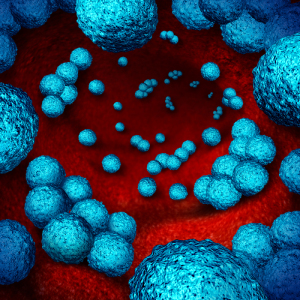
Organisms adapt to antibiotics
From the November 2016 issue of HealthCare Business News magazine
By Thom Wellington
People in the U.S. are entering an age of potentially devastating and deadly forces merging in our hospitals. Almost all Americans will receive care in a medical setting at some point, and antibiotic resistance can affect anyone. Antibiotic resistance is the ability of microbes to resist the effects of drugs, resulting in germs not being killed and their growth not stopping.
Antimicrobial agents, which have greatly reduced illness and death, have been used for the last 70 years to treat patients who have an infectious disease. However, these drugs have also been used so widely, and for so long, that the infectious organisms the antibiotics are designed to kill have adapted to them, making the drugs less effective. With at least 2 million people becoming infected with antibiotic-resistant bacteria every year, resistance to antibiotics and health care-associated infections (HAIs) are increasing the death rate back up to 100,000 annually.
Both antibiotic-resistant organisms and HAIs are mostly preventable. “New data shows that far too many patients are getting infected with dangerous, drug-resistant bacteria in health care settings,” said Tom Frieden, M.D., director of the Centers for Disease Control and Prevention, in a news release. According to the CDC, HAIs are major causes of both morbidity and mortality. Even with a significant improvement in the HAI death rate over the last few years, the U.S. seems to be plateauing at a death rate of 75,000 people annually.
Organisms resistant to antimicrobials continue to emerge, which many believe will lead to untreatable diseases. Like HAIs, antimicrobial-resistant infections lead to a significant increase in both medical treatment and consequent expense of personnel and drugs, and extended hospital stays. Consider these four actions to fight antibiotic resistance:
• Avoid infections
Taking time to educate the patient is a key ingredient in successfully reducing the amount of antibiotics being used, and will reduce the likelihood that resistance will develop during therapy. Drug-resistant infections can be prevented through immunization, safe food preparation, hand washing and using antibiotics as directed when necessary. Preventing infections also prevents the spread of resistant bacteria.
• Track all data
Many hospitals are incorporating big-data strategies to help with treating patients. Keeping records of all antibiotic-resistant infections, causes of infections and whether there are particular risks that caused someone to get a resistant infection will help experts develop scientific strategies to prevent those infections and prevent the resistant bacteria from spreading.
